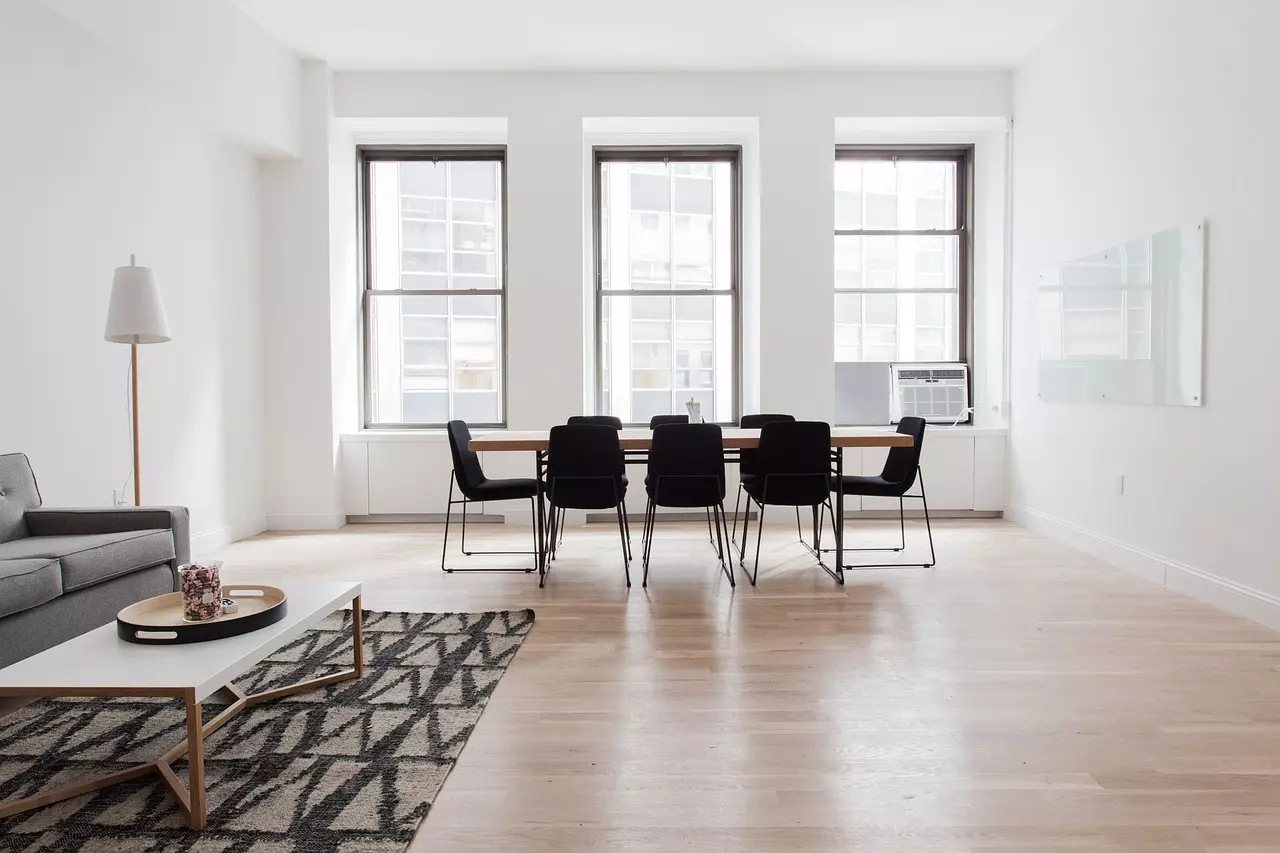These types of windows can be defined as wall openings to admit fresh air and sunlight into the building and give an outside view. The window is provided for aesthetic purposes.
Windows are the eyes into (and out of) a home, and can utterly transform a space. Whether you want to ventilate and illuminate your interior or keep prying eyes and foul weather out, there’s a perfect window for every room.
The window is an essential component of any structure. It provides sufficient insulation against heat and cold.
There are different types of windows available based on framing material, location, design, operational movement of shutter, position, casement size and shape, casement material, manner of fixing, aesthetic purpose, etc.
Also Read: Types of Glasses for Construction You Need To Know In 2023
Table of Contents
- 1. Window Designs for the Modern Home
- 2. Single-Sash Window
- 3. Double-Hung Window
- 4. Casement Window
- 5. Awning Window
- 6. Bay Window
- 7. Bow Window
- 8. Jalousie Window
- 9. Palladian Window
- 10. Sliding Sash Window
- 11. Fixed Window
- 12. Glass Block Window
- 13. Picture Window
- 14. Skylight Window
- 15. Storm Window
- Choosing Custom Windows
- Deciding to Go Custom
- Replacement Windows
- Cost
- Measuring and Installing
- Replacement Window Materials
- Window Buying Guide
- Best Types of Windows for Various Purposes
- FAQs On Types of Windows
- Popular On Website for Engineers Right Now!
1. Window Designs for the Modern Home
Whether you are renovating an existing room or planning an extension for the home, window design is an important consideration—the types and sizes of windows in a space can utterly transform it. However, when it comes time to decide between the different types of windows and window designs, appearance and style should not be your only considerations. Think about their energy efficiency, ventilation, and safety factors, which can all impact whether a window style is right for your home.
Keep reading to learn window style names and the types of windows for home renovation projects that accentuate a home’s exterior or interior style.
2. Single-Sash Window

The sash window type consists of two panels arranged vertically. This type of window is attributed to the English inventor Robert Hooke, and its use caught on quickly due to the design’s simplicity. In the single-hung sash, the bottom panel moves up to allow the flow of air, while the top panel stays fixed.
These types of windows are Best for bathrooms and smaller bedrooms to provide airflow and ventilation for these rooms. Single-sash windows are also more affordable than double-hung windows, making them a good choice for DIY projects with a small budget.
3. Double-Hung Window
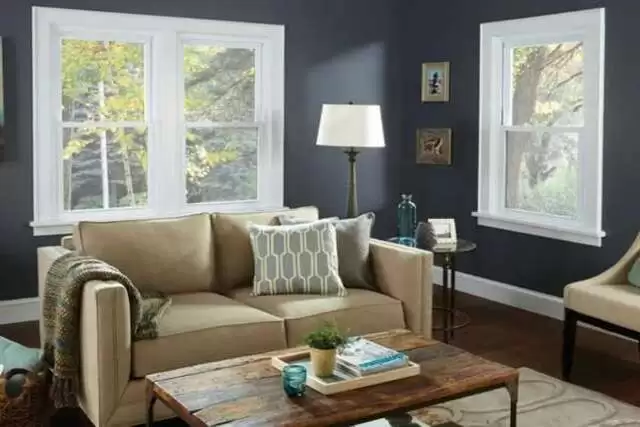
The double-panel sash window is probably the most widely used of all types of windows. It consists of two vertically arranged panels, both of which can be moved up and down.
Best for: Better for ventilation than a single sash window, double-hung windows are great for bathrooms and bedrooms. Homeowners with kids or pets can also keep the lower panel locked while allowing air in through the top panel.
4. Casement Window
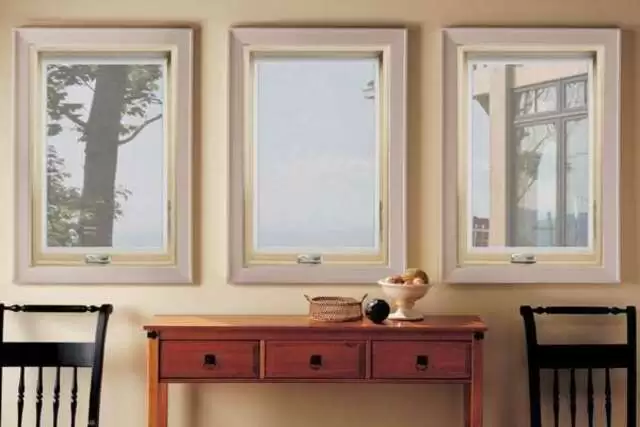
The casement window was popular in the UK before the invention of the sash window, and it is still popular in many European countries. In this design, the operable panel (installed singly or in a series) hangs on a hinge that enables the window to be opened like a door.
Best for: Casement windows are regularly installed above doorways, in stairwells, and in other hard-to-reach locations because the crank is relatively easy to operate with just one hand, even when the user’s arm is fully extended to reach the crank.
5. Awning Window
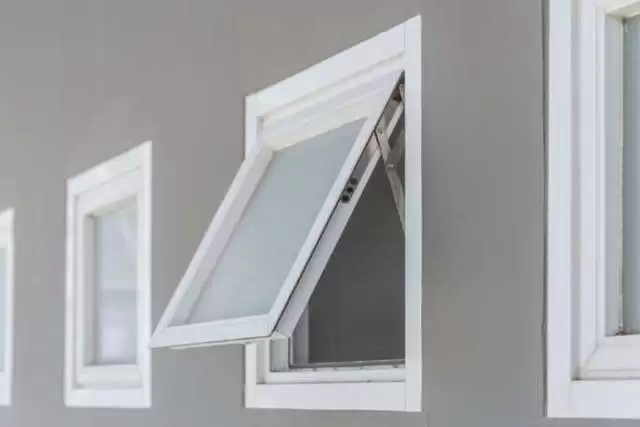
The awning window is a casement that’s mounted vertically, with the hinge at the top so the window pushes out. These types of windows are especially useful for allowing air to flow without allowing seasonal debris (e.g., falling leaves) or rainfall into the home.
Best for casement windows, awning windows operate with a crank mechanism that is easy to use, even when reaching above your head. For this reason, casement windows are best used above doorways, in stairwells, and in narrow spaces that may be hard to access.
Also Read: Door Types for Your Modern Home
6. Bay Window
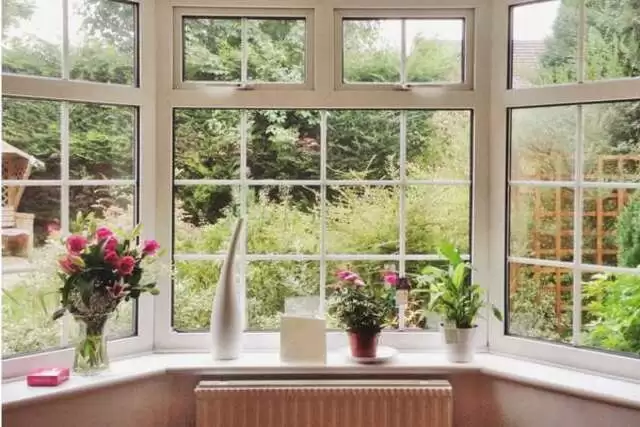
Since their use in castles during the English Renaissance, bay windows have come a long way. Today—in mansions and modest homes alike—bay windows are beloved because they allow for sweeping views of lawns and gardens outside, and allow sunlight inside the home as the sun moves across the sky over a day.
Best for: Allow tons of natural sunlight to flood in through a wide bay window in the kitchen or living room. The angled side windows typically open, improving ventilation in the space.
7. Bow Window

The bow window depends on the curved architecture and uses more glass panels than a bay window does (to account for the curvature). The window pictured is from the Hôtel Otlet in Brussels, Belgium.
Best for: If your goal is to have an impressive view of the yard or neighborhood outside the home, bow windows are a good option. They tend to be a bit more expensive than bay windows but typically allow more natural light into the home.
8. Jalousie Window
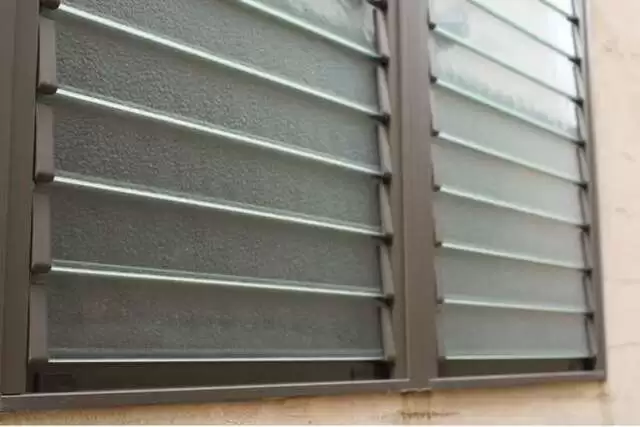
The jalousie window was invented by Joseph W. Walker of Massachusetts in 1900, and it’s a distinctly American style. These types of windows consist of thin, staggered strips of glass that open and close together like a Venetian blind.
Best for Popular in warmer cities and coastal regions, install Jalousie windows in the kitchen, dining room, or anywhere else you want easy access to a nice breeze on a hot day.
9. Palladian Window
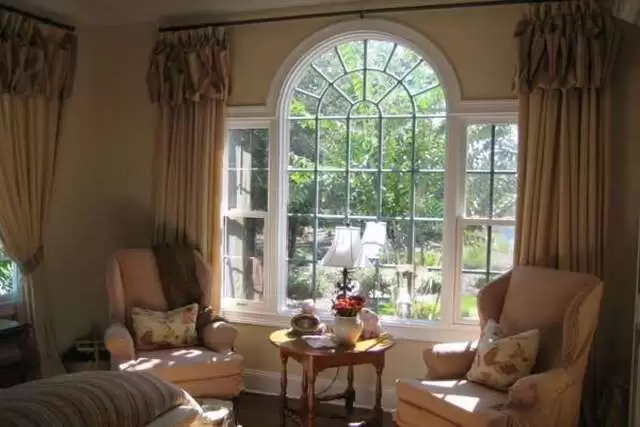
The Palladian window is derived from the work of exalted Renaissance architect Andrea Palladio. The Palladian design is usually a large panel embellished by an arched top and two smaller side panels.
Best for: The purpose of a Palladian window is to draw attention—it’s meant to be a main focal point in the home. Install a Palladian window in a living room, dining room, or lavish office for the best effect.
Also Read: Floor and Decor: Types and Materials In 2023
10. Sliding Sash Window
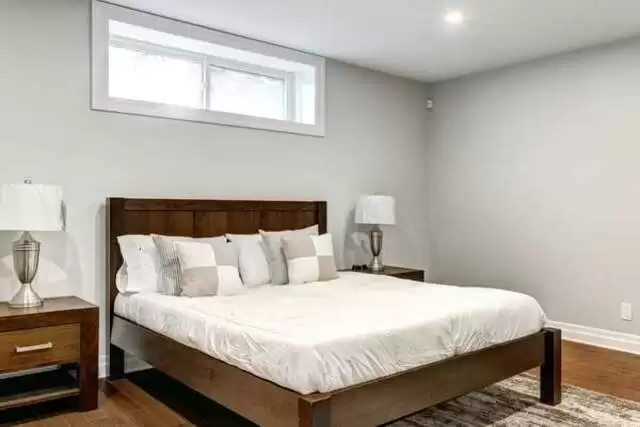
The sliding sash window consists of two horizontally mounted sashes that open and close easily by sliding along a track. Sliders are an excellent choice of window to mount over a counter or sink, or in any circumstance where there is an obstacle blocking access to the window.
Best for Sliding sash windows are ideal for kitchens and bedrooms, especially in homes with children or pets, because they’re easy to open and close—and clean.
11. Fixed Window
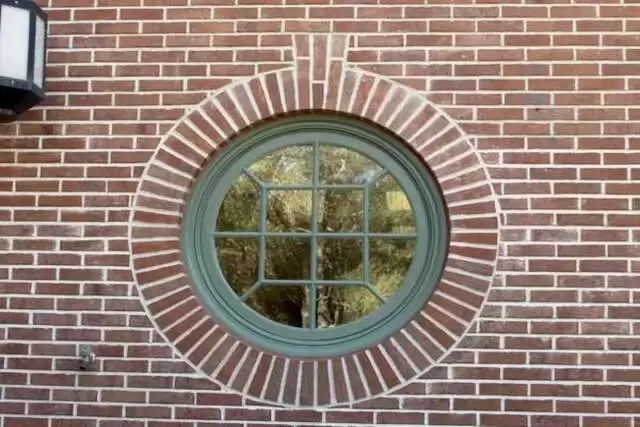
Fixed windows do not open; they can either be located on exterior walls to admit natural light or set into interior walls (e.g., over a door). These types of windows come in all shapes and sizes, and of course, custom options are also available.
Best for Rooms in which you would like lots of natural sunlight and a great view of the outdoors, but where you do not want to reduce the energy efficiency of the home by installing a window that opens.
12. Glass Block Window
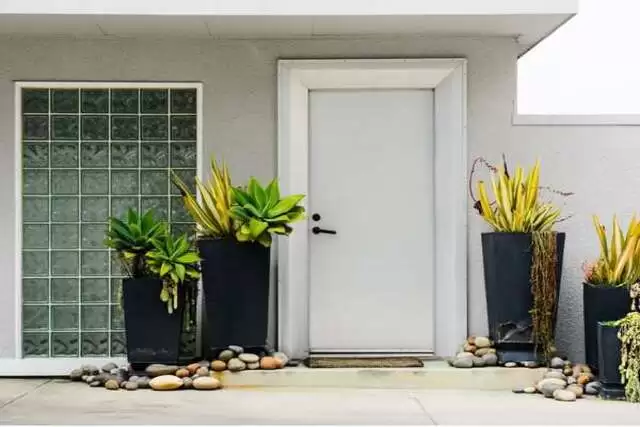
One of the more decorative types of windows, glass block windows are made up of several sections of thick glass blocks that allow natural light to pass through into a room but are not fully transparent. These glass blocks are commonly frosted or have a patterned design that adds a decorative element to a space. Glass block windows cannot be opened for ventilation.
Best for: Glass block windows are typically used in spaces where privacy is key: in bathrooms, for example, as well as in basement apartments and around front doors.
Also Read: The Contractor | Types, Responsibilities, and Conditions You Need To Know
13. Picture Window
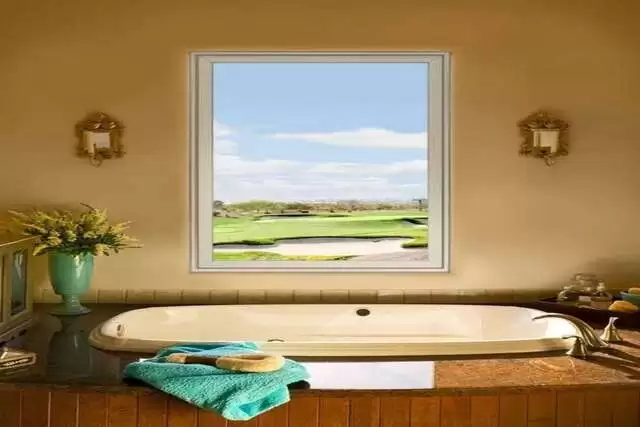
Picture windows are designed to be as simple as possible—the idea here is for nothing to detract from the view through the window. Some picture windows, particularly very large ones, may have inset metal grids, which are both decorative and help reduce the risk of breakage. These windows do not open, so they aren’t a good choice for ventilation.
Best for: A picture window is ideal for emphasizing mountains, lakes, oceans, and other stunning views that can be seen from the home.
14. Skylight Window
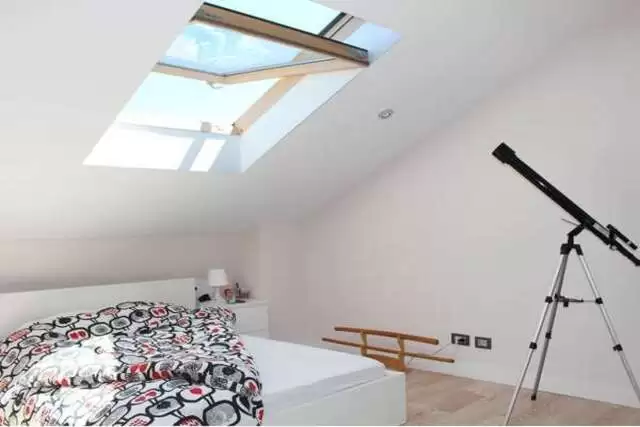
One of the more well-known window styles is a skylight window. This window is installed in the ceiling instead of in the wall, allowing the home to have the full effects of an open sky, without the risk of rain or snow falling into the house. Skylight windows can either be fixed, meaning that they don’t open, or they may have a crank mechanism or remote control to operate the window.
Best for: Skylight windows are a great choice for adding natural light to small rooms without taking up wall space. They are also commonly installed in high front hallways or foyers to improve the lighting at a home’s entrance
15. Storm Window
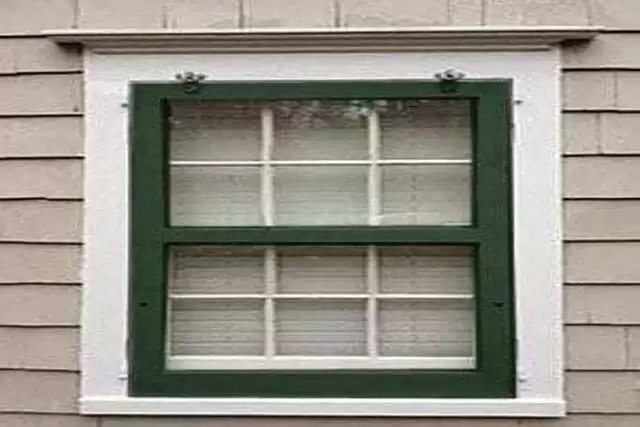
Storm windows are a specialized type of window that prioritizes function over appearance. As the name indicates, storm windows are designed to withstand powerful wind, blowing rain, sleet, hail, ice, and snow. They can be installed on either the interior or exterior side of an existing window pane and provide an additional layer of protection without obstructing the view.
Best for: Set up storm windows in the existing window frames to help keep a home protected in severe storms. For this reason, they are best for areas prone to heavy storms, tornados, or hurricanes.
Choosing Custom Windows
There is more to replacing windows than choosing the glass and the frame. Existing openings may need to be changed to accommodate new windows. Energy efficiency upgrades or stricter building codes may dictate which models you can choose from. Additional expenses required for carpentry may also determine whether you go with custom or standard window sizing. Either way, it’s best to review the options and compare the final costs before deciding to go with custom windows.
Also Read: Tendering Process: Advantages and Types, All You Need to Know
Deciding to Go Custom
When deciding to replace your windows, you must first determine whether you need custom windows. If the openings are an irregular size, compare how much it will cost to make the hole bigger or smaller to accommodate a stock window.
This is a better option if you’re putting in a smaller window, but since it will still require patching, filling, and trimming or the services of a contractor, this option may cancel out any savings from buying off the shelf.
If you’re making the opening larger, you might have expensive adjustments to the load-bearing parts of the wall. In all, it’s best to have a professional review the situation and give you an estimate so that you can really compare numbers.
Non-standard sizing is not the only reason to go custom. Replacing existing windows that don’t complement the design of your house is easier with custom windows that allow you to buy whatever style or shape you want.
Upgrading to energy-efficient models is another great reason to opt for custom windows, especially if you are replacing a treasured signature window like a bow, bay, or oriel. Custom ordering allows you to determine the features and measurements you need.
Before you place your order be sure to check out different manufacturers. A size, option, or shape that is non-standard at one company may be standard at another, says Jeffrey Lowinski, vice president for technology marketing at the Window & Door Manufacturers Association.
A third company may have a standard size you can use with minor modifications. “Shopping around to find a standard size that fits your opening may save you some money,” Lowinski says. You may also want to see if using several standard windows, instead of a large custom one, works in your space.
When ordering custom windows, make sure you have them made with the energy efficiency and performance options best suited for your climate and region. Custom windows are generally available in the same materials as standard windows—vinyl, wood, aluminum, fiberglass, or composite—and with the same options, including coatings, gases, impact resistance, and light-transmittance values.
Also, ask about the warranty: Most companies provide the same warranty on their custom windows as on their standard ones. The custom windows should also maintain the same performance ratings assigned by industry groups as the standard products.
Also Read: The Construction Team: Managing the Building Process
Replacement Windows
Once you’ve decided to go custom, you have several options. If the existing frame is in good condition, you may not have to replace the whole window; that can save you money and let you keep the same interior and exterior trims and appearance. You might be able to just order custom panes unless they’re glued into the frame or you want to upgrade to a thicker glass.
The next cheapest option is to order a custom sash—the removable glazing and support—if it’s compatible with the old frame. You can also order a custom replacement window, which is a new unit held together with a thin frame that’s inserted into the existing frame. The most expensive option is replacing the entire unit with a new window, including the frame, sash, and trims.
Cost
There’s a good chance your custom windows will cost more and take longer to order than standard ones. “Generally you will pay a premium for a custom-sized product,” says John Lewis, technical director of the 400-member American Architectural Manufacturers Association. Still, it depends on the manufacturer and the flexibility of its equipment.
Many companies do “just-in-time production,” which means they don’t make anything until they have a specific order. At these factories, there may be little cost difference between standard and custom windows, and the price per unit will be the same whether they make one window or 50.
However, at a company that has to set up the equipment to make a specific window, you might be able to negotiate a cheaper per-unit price by ordering a greater number. If that’s the case and you plan to replace more of the same windows in the future, it might be cheaper to order them all at once.
Measuring and Installing
Unless you know what you’re doing, it’s best to let an expert do the measuring before ordering your custom windows. “That’s a fatal error right there if you mismeasure the openings,” Lewis says. And once they’re made, you want to make sure they’re installed right. You can have the best, most expensive custom windows, but you will have wasted your money if they leak air or water, so make sure to have them professionally measured and installed.
Also Read: 21 Types of Engineering To Know In 2023
Replacement Window Materials
While the materials chosen for a window frame do influence its thermal characteristics, they play a much larger role in determining its physical properties, such as thickness, weight, and durability. Here are some of the most popular standard window frame options:
- Wood: Prized for their aesthetic value, wood-framed windows are sold in a variety of shapes and sizes. If properly maintained, they can enjoy a long life, rewarding energy-conscious homeowners with a high R-value (a measure of thermal resistance).
- Wood clad: If one downside of traditional wood-framed windows is their maintenance requirements, vinyl- or aluminum-clad wood windows offer the best of both worlds—that is, the warm appearance of wood on the interior and improved weather resistance on the exterior.
- Aluminum: Strong, lightweight, and durable, aluminum windows are considerably less expensive than their wood-framed cousins. The tradeoff between the two is not only one of style but also of performance: Aluminum is prone to condensation, which can in some cases lead to mold.
- Vinyl: A lasting, low-maintenance window material that resists moisture, vinyl costs less than wood, and although it cannot be painted, vinyl windows are available in a wide range of stock colors and a virtually infinite number of custom hues.
- Fiberglass composite: Another option for homeowners who want the fine appearance of wood but less of a hassle, fiberglass composite windows excel in extreme conditions. They neither warp nor sag in high heat, neither shrink nor turn brittle in cold.
- Composite: Made from a mingling of plastic and organic materials, composite windows are typically strong and energy efficient. If you wish to achieve a specific look and none of the stock colors strike your fancy, custom orders are indeed possible.
Window Buying Guide
Now that you have a good understanding of your window options, what else should you look for? Here are some tips.
- ENERGY STAR and NFRC labels: The Energy Star label means your windows meet the EPA’s minimum standard for insulating in your area.
- In colder climates, consider gas-filled windows with low-E coatings to reduce heat loss. You can also get a low U-factor for better thermal resistance. U-factor is the rate at which the window conducts non-solar heat flow.
- In warmer climates, choose windows with coatings to reduce heat gain. Look for a low solar heat gain coefficient (SHGC). SHGC is a measure of solar radiation admitted through a window. Low SHGCs reduce heat gain in warmer climates.
- In climates that are both hot and cold (i.e. have seasons), get windows with both low U-factors and low SHGCs.
Best Types of Windows for Various Purposes
Energy Efficiency
Installing energy-efficient windows is a smart way to save money. Choose a double-paned window with Low-E glass for maximum energy efficiency. Low-E is a thin coating that helps to reflect heat, keeping the inside of your home more comfortable.
Windows with a vacuum-sealed argon fill may cost more, but they also help to conserve energy and should provide you with a decrease in your monthly energy bills. Check for windows with the ENERGY STAR label to provide exceptional energy efficiency for your home.
Insulation
If you want maximum insulation, the new R-5 Series windows have a higher R-value that makes them better at retaining heat.
Standard ENERGY STAR-rated windows have an R-value of 3. A higher R-value reduces heat loss and can improve your home’s insulation levels by 30 to 40 percent. All windows with Low-E coatings or a gas fill are more insulating than those without these features.
Tropical Climates
Avoid windows with wooden frames if you live in a tropical climate since humidity and temperature fluctuations can cause the wood to expand and contract or rot. Instead, select windows with durable vinyl frames that can withstand the tropical weather. If you live in a storm-prone area like Florida, aluminum storm windows are highly recommended.
Choose windows that include energy-efficient glass or coatings to help keep your home nice and cool when temperatures and humidity levels rise.
Bathrooms
The best windows for bathrooms are easy to open for improved ventilation. Look for casement and awning-style crank windows that are easy to open and close. Unlike sliding windows, when crank windows are closed, they create an airtight seal to prevent heating and cooling loss.
When they’re open, they provide much-needed ventilation in moist, humid areas of the home, like bathrooms. Choose privacy glass crank awning windows for your bathroom so that you can enjoy safety and privacy whenever you open them.
Kitchens
For the kitchen, choose sliding windows that are easy to open. Install a sliding glass window above your kitchen sink to enjoy the view and get more air circulation. A garden window is great for growing fresh herbs and vegetables indoors.
These large windows have glass on each side that allows the sunlight to reach your plants from every angle. Double-hung windows are also one of the best options for a kitchen. That’s because these windows can be opened from the top or bottom, providing you with more control over air circulation and ventilation while you’re eating or cooking.
A sliding glass door is another great choice that leads to the outside for patio dining.
Also Read: Material Processing | Definition and Examples
Living rooms
Living room windows come in a myriad of styles, including large picture windows that allow you to enjoy the view outside. Bay windows are also a great choice for living rooms since they can also double as a seat or a small shelf or table. To give your living space some personality, choose custom architectural windows available in a variety of unique shapes and sizes.
If cleaning your windows is a concern, choose double-hung windows that you can access from the top and bottom for easy care.
Bedrooms
Always choose bedroom windows that lock for added security. When it comes to energy efficiency, casement windows are an excellent choice for bedrooms. These windows create an airtight seal when they’re closed to keep the heat in your bedroom during the winter, and the cool air in during the summer.
They’re also a great choice for bedrooms since they can swing in or out, allowing you to open the windows and get airflow inside. Bay windows are also lovely for a bedroom, but you’ll want to invest in some custom blinds or curtains to ensure privacy.
Sunrooms
The key to choosing windows for a sunroom is their durability, weather resistance, and easy maintenance. Choose large windows with a sturdy aluminum frame or try vinyl windows that can handle a lot of direct sunlight. Large, tall windows are ideal since they provide you with the best views of the outside while also allowing as much sunlight in as possible.
Select windows with a special Low-E coating to block UV rays so that your flooring and furniture don’t fade. Sliding glass doors are also a great option for sunrooms.
Basements
Hopper windows are a good choice for basements since they can be opened from the bottom. These narrow windows will provide your basement with extra airflow without letting too much light in. A hopper window uses a lever that you pull down to open it, or you can choose to install awning windows.
These windows open from the bottom and have hinges at the top. It’s important to choose basement windows that are insulative, well-sealed, and easy to open and close. The key is to install windows that will keep rain and weather out to prevent moisture damage.
Also Read: What is Civil Engineering? | History and Functions
FAQs On Types of Windows
Below are answers to commonly asked questions about glass windows.
How long do glass windows last?
Glass windows are fairly long-lasting but can last even longer with proper maintenance and care. The average time for glass windows to last is between 15 and 20 years without extensive maintenance and up to 30 with proper care.
The lifespan of your glass window is also affected by the type of area in which you live and whether or not there is a significant amount of tumultuous weather (i.e. thunderstorms and snow). However, the type of frame you use also has a huge impact on the lifespan of a window.
For example, wooden frames can last for 10 to 20 years on average but have been reported to last up to 30 years. Aluminum frames last even longer, ranging between 15 to 40 years. Vinyl frames are arguably the most durable, lasting anywhere between 20 and 40 years with proper care.
Can glass windows be painted?
Yes, but you must make sure that you have the correct type of paint. For example, acrylic paint can be useful for not only decorating your window but also for making the window itself more durable.
To allow the paint to increase the lifespan of your window, you should get acrylic paint that has a baked-on capability. The feature might not be labeled as such, but you’re essentially looking for something that will become harder when exposed to direct sunlight.
Can glass windows crack on their own?
Yes, glass windows can crack on their own. However, it’s more nuanced than you might think, and is caused by a variety of causes. The phenomenon is referred to as Spontaneous Glass Breakage and is usually the result of how the glass was tempered or installation errors.
It is difficult to tell if there is a problem with the glass, though, as it typically cracks spontaneously at random or in tumultuous circumstances.
If you want to prevent your glass windows from breaking, we recommend that you read up on Spontaneous Glass Breakage so you can be aware of the risks and be properly prepared.
Can glass windows be repaired?
Glass windows can be repaired, but the specific type of repair necessary will depend on just how severe the damage is. For example, it is possible to look at small cracks in a window and reinforce the glass so it does not break any further, while larger cracks may require the entire window to be replaced.
If you are unsure about whether or not your window needs repair, it’s important to do your research and consult a professional for their opinion. If you don’t do this, you put yourself (and your window) at risk.
Are glass windows load-bearing?
Whether or not glass windows are load-bearing depends on the specific type of frame and brand you purchase. Aluminum glass windows are not load-bearing, meaning that you should exercise caution when looking into those specific types of windows.
However, there is no surefire way to tell if the windows you’re looking into are load-bearing. If you want to be sure, consult a professional and look for products that specifically advertise load-bearing capabilities. After all, the load-bearing ones will definitely advertise that.
How are glass windows made?
Glass windows are typically made by melting various minerals. The temperature for the melting process is often so high (around 3090 degrees Fahrenheit) to melt the specific components into one substance. The most common element in glass is often silica, a compound that is also often found in sand.
Once the compounds are all mixed into one liquid, limestone is added to the mix in order to make sure it does not dissolve. The addition of limestone results in glass-forming, with this molten glass being shaped into various objects. In the case of windows, the molten glass is molded into window shapes to be sold after it properly cools down.
It’s worth noting, though, that this process will change slightly depending on the specific kind of glass that you’re making and which types of materials you’re using.
Can glass windows be resealed?
To put it simply, yes. However, if the crack is too substantial to be resealed, it isn’t very likely that it is possible. To understand whether or not the window you want to fix is resealable, you should contact a professional to get a proper estimate and evaluation.
Can glass windows be recycled?
In the United States, it’s far less common for glass windows can be recycled. Contrary to popular belief, not all types of glass are made the same, making certain recycling facilities not interested in having to sort through glass windows.
The reason why glass windows are often different from bottles and other types of glass that you should recycle is that the glass is treated, making it difficult to break up and subsequently to recycle.
However, this does not mean that you shouldn’t try to recycle windows if you have the chance. Some organizations have been specifically created to help people recycle windows properly and we recommend you look into one of those facilities to recycle your windows properly.
Another recommended option for those looking to recycle glass windows is to consider ways in which you can reuse your windows, whether it be through repairing them first or installing them in a context that works.
Theater companies are also always on the lookout for functioning props, so, even if you can’t use your cracked window at home, perhaps your window can become part of a new play.
Can used glass windows be sold?
Yes, but it is often tricky to sell glass windows at any comparable market price. The only situation in which someone would want to purchase your glass windows is for historical preservation purposes, so it’s unlikely that someone will take you up on it.
However, if you happen to have a glass window that is of significant historical value, it is likely possible to sell it to a local shop. Even if the window pane itself isn’t usable anymore, you can likely still sell the frame for a good amount of money.
Are glass windows insulated?
Not all of the time. The insulation process that makes it possible to properly regulate the temperature of a room is typically achieved through the glass-making process. So, if you want to have windows that are truly insulated, it’s important to make that a goal of your window shopping from the beginning.
If you don’t take this first step, you might end up with windows that have too many spaces for air and subsequently don’t insulate very well. However, this doesn’t mean that you can’t insulate windows on your own if you want.
If you want to try insulating your windows, there are plenty of options available on the internet and we recommend you do some research before committing to one. If you want to make sure that you’re doing it properly, always get the opinion of a professional.
Are glass windows soundproof?
Not necessarily. Though some glass windows are specifically constructed to be soundproof, this is not the case for all glass windows. If you are somebody who wants to have soundproof windows, you should search for a brand that advertises this feature.
It’s almost impossible to soundproof windows that have already been made due to the way the glass is constructed, so you will have to seek out this help as an additional step of the process. Though there may be guides that claim to help soundproof any type of glass window, they are often incorrect and misleading.
Are glass windows waterproof?
Not inherently. Though water technically bounces off of glass windows, windows that do not have proper frames might be more susceptible to damage during more tumultuous weather conditions such as flooding, hurricanes, and thunderstorms.
If you want to try out a type of window that will hold up in poor conditions, we recommend looking into glass block windows. However, to ensure that you’re installing any windows you purchase properly, you should enlist the help of a professional. If you don’t, you run the risk of your windows not being truly waterproof!
How are windows measured?
It’s so much easier than you think. Start by noting the height first, followed by the width. This ensures that you won’t doubt which figure is which when ordering your new window. Height: Measure the left, middle, and right, and ensure you note down the smallest measured dimensions.
How are windows replaced?
Window replacement can be a simple DIY job — just removing the old window, setting and leveling the new replacement window, and cutting, drilling, and caulking it. Remember, it can be a messy process, so you need patience, precision, and ample time. But, if you’re short of these three, consider hiring a professional window installer.
Can you get vitamin D through windows?
Virtually all automobile and commercial glass blocks UVB rays. So, you’ll not increase your Vitamin D levels by sitting next to a sunny window.
Can you paint vinyl windows?
You can paint vinyl windows. However, a coat of paint shouldn’t be applied directly to the vinyl itself. The surface isn’t ideal for paint. So, the paint applied directly to the vinyl window frame might flake and peel off quickly.
Why do birds fly or peck into windows?
Birds sometimes attack windows by striking or pecking them. This is because they see their reflection and assume it’s a challenger of their territories.
How long do windows last?
Windows can last between 15 and 30 years depending on the materials used, the weather conditions of where you live, and the craftsmanship of the original installer.
Can you use Windex on car windows? Can you use Windex on tinted windows?
Yes, you can use Windex on your car windows. Some might advise you to skip the Windex with tinted windows however there is no proof that Windex with ammonia is dangerous.
How do flies get in the house when windows are closed?
Flies can also get in the house through gaps and cracks like openings around vents, holes in the roof, damaged ceilings, cracks or holes around the AC, foundations, etc.
How are windows tinted?
Windows are tinted by applying a tinting film onto the glass surfaces. Unlike popular belief, the film isn’t applied to the outer surface of the glass. This film is a strong polyester laminate treated in various ways to improve the appearance and look of existing windows. Another thin film is also applied to this clear polyester film.
Can you use AC after tinting windows?
You can use air conditioning after tinting your windows. No matter how cold your AC gets inside the cabin, your window tint will remain unaffected.
Can you tint windows on a lease?
It’s up to your dealership to decide whether the tint is acceptable. Avoid tinting the windows on your lease without confirmation, as this attracts a fine for excessive wear as you return the vehicle.
Can you take tint off car windows?
Yes, you can take tint off car windows by using a knife or a razor blade. First, spray the car windows with soapy water, cut the edges of your tint, and pull off with your hands. If some of the tint sheets remain stuck, repeat the process.
Why do spark plugs break windows?
Spark plugs break windows because they contain ceramic parts and elements that break glass easily. Generally, a ceramic object is stronger and more complex than glass. So, even with a little force, it might shutter a glass such as a window or a car’s windshield.
How wide are standard windows?
A standard window’s width can be two feet to eight feet. Standard heights can also range from two feet to eight feet tall, with additional heights of even about 62 inches.
Why do my windows have condensation? Why do car windows fog up?
Your windows condense when humid, warm air comes into contact with the cool glass. This is prevalent in the winter when the outside air is dry and cold, and the indoor air is humid and warm.
What is the best way to clean windows? Are microfiber cloths good for cleaning windows? Can you use vinegar to clean windows?
The best way to clean windows is by mixing two gallons of water and a teaspoon of dishwashing liquid. Some people prefer to use water and vinegar to clean windows. Also, microfiber, an absorbent cloth, can clean windows, leaving them shiny, clear, and streak-free.
Why do churches have stained glass windows?
Ideally, churches have stained glass windows for theological purposes; a way to convey to the masses things the church wants them to think about, see, and understand, including Christ’s birth, life, death, resurrection, etc.
Do soundproof windows work?
Yes! Soundproof windows help reduce sound regardless of your window design.
Do storm windows help insulate?
Storm windows are more insulating, reflect heat into the house, and can help cool the home during the summer.
Are windows required in bedrooms?
Your bedroom should at least have an opening window of about 7% as large as the floor area — windows act as a source of ventilation and means of fire escape.
We hope this article helped you learn about 15 Types of Windows Every Homeowner Should Know In 2023. You may also want to learn about Door Types for Your Modern Home, Engineering Disciplines, Construction Terminologies You Should Know, and Types of Glasses for Construction You Need To Know In 2023.
If you liked this article, please Join WebsiteForEngineers on Telegram, and you can also find us on Pinterest, Twitter, and Facebook.
